#1997 US Nationals
Photo

Tara Lipinski skating to Walking on Sunshine in the 1997 US National gala.
(Photo by Barry Mittan)
#Katrina and the Waves#Walking on Sunshine#Tara Lipinski#Figure skating#1997 US Nationals#United States#Women#1996–1997#Yellow
15 notes
·
View notes
Text
Fleetwood Mac - The Chain
1977
"The Chain" is a song by British-American rockband Fleetwood Mac, released on their 1977 album Rumours, which won Album of the Year at the 1978 Grammy Awards and received Diamond certifications in several countries, including the UK, Canada, Australia, and the US, in where it is certified 21× Platinum by the Recording Industry Association of America (RIAA). As of February 2023, Rumours has sold over 40 million copies worldwide, making it the 5th best-selling album of the 1970s and the 9th best-selling album of all time. It was inducted into the Grammy Hall of Fame in 2003, and was selected for preservation in the National Recording Registry in 2017, being deemed "culturally, historically, or aesthetically significant" by the Library of Congress.
"The Chain" was created from combinations of several previously rejected materials, including solo work by Lindsey Buckingham, Stevie Nicks, and Christine McVie. The song was assembled, often manually by splicing tapes with a razor blade, at the Record Plant in Sausalito, California, with engineers Ken Caillat and Richard Dashut. Stevie Nicks wrote the lyrics about Lindsey Buckingham as their relationship was falling apart. Buckingham and Nicks share lead vocals on the song.
In 1997, Fleetwood Mac released a live concert CD/DVD package called The Dance, which featured the reunion of the Rumours-era Fleetwood Mac members. The rendition of "The Chain" reached number 30 on the Billboard Mainstream Rock Tracks chart. Additionally, the studio version began appearing on the charts in 2009, where it peaked at number 81 in the UK. In October 2023, the song was certified quadruple platinum by the British Phonographic Industry (BPI) for sales and streams of over 2,400,000 units.
"The Chain" received a total of 92% yes votes!
youtube
3K notes
·
View notes
Text





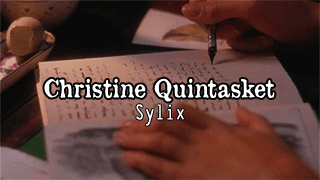


Historical Indigenous Women & Figures [6]:
Queen Nanny: the leader of the 18th century Maroon community in Jamaica, she led multiple battles in guerrilla war against the British, which included freeing slaves, and raiding plantations, and then later founding the community Nanny Town. There are multiple accounts of Queen Nanny's origins, one claiming that she was of the Akan people from Ghana and escaped slavery before starting rebellions, and others that she was a free person and moved to the Blue Mountains with a community of Taino. Regardless, Queen Nanny solidified her influence among the Indigenous People of Jamaica, and is featured on a Jamaican bank note.
Karimeh Abboud: Born in Bethlehem, Palestine, Karimeh Abboud became interested in photography in 1913 after recieving a camera for her 17th birthday from her Father. Her prestige in professional photography rapidly grew and became high demand, being described as one of the "first female photographers of the Arab World", and in 1924 she described herself as "the only National Photographer".
Georgia Harris: Born to a family of traditional Catawba potters, Harris took up pottery herself, and is credited with preserving traditional Catawba pottery methods due to refusing to use more tourist friendly forms in her work, despite the traditional method being much more labour intensive. Harris spent the rest of her life preserving and passing on the traditional ways of pottery, and was a recipient of a 1997 National Heritage Fellowship awarded by the National Endowment for the Arts, which is the highest honor in the folk and traditional arts in the United States.
Nozugum: known as a folk hero of the Uyghur people, Nozugum was a historical figure in 19th century Kashgar, who joined an uprising and killed her captor before running away. While she was eventually killed after escaping, her story remains a treasured one amongst the Uyghur.
Pampenum: a Sachem of the Wangunk people in what is now called Pennsylvania, Pampenum gained ownership of her mother's land, who had previously intended to sell it to settlers. Not sharing the same plans as her mother, Pampenum attempted to keep these lands in Native control by using the colonial court system to her advantage, including forbidding her descendants from selling the land, and naming the wife of the Mohegan sachem Mahomet I as her heir. Despite that these lands were later sold, Pampenum's efforts did not go unnoticed.
Christine Quintasket: also known as "Humishima", "Mourning Dove", Quintasket was a Sylix author who is credited as being one of the first female Native American authors to write a novel featuring a female protagonist. She used her Sylix name, Humishima, as a pen name, and was inspired to become an author after reading a racist portrayal of Native Americans, & wished to refute this derogatory portrayal. Later in life, she also became active in politics, and helped her tribe to gain money that was owed them.
Rita Pitka Blumenstein: an Alaskan Yup'ik woman who's healing career started at four years old, as she was trained in traditional healing by her grandmother, and then later she became the first certified traditional doctor in Alaska and worked for the Alaska Native Tribal Health Consortium. She later passed on her knowledge to her own daughters. February 17th is known as Rita Pitka Blumenstein day in Alaska, and in 2009 she was one of 50 women inducted into the inaugural class of the Alaska Women's Hall of Fame
Olivia Ward Bush-Banks: a mixed race woman of African American and Montaukett heritage, Banks was a well known author who was a regular contributor to the the first magazine that covered Black American culture, and wrote a column for a New York publication. She wrote of both Native American, and Black American topics and issues, and helped sculptor Richmond Barthé and writer Langston Hughes get their starts during the Harlem Renaissance. She is also credited with preserving Montaukett language and folklore due to her writing in her early career.
part [1], [2], [3], [4], [5] Transphobes & any other bigots need not reblog and are not welcome on my posts.
309 notes
·
View notes
Text
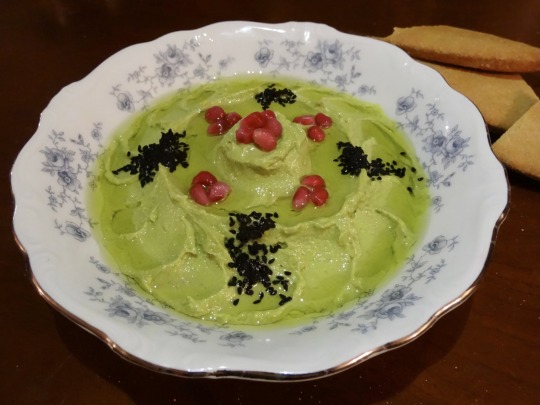
[ID: A bowl of avocado spread sculpted into a pattern, topped with olive oil and garnished with symmetrical lines of nigella seeds and piles of pomegranate seeds; a pile of pita bread is in the background. End ID]
متبل الأفوكادو / Mutabbal al-'afukadu (Palestinian avocado dip)
Avocados are not native to Palestine. Israeli settlers planted them in Gaza in the 1980s, before being evicted when Israel evacuated all its settlements in Gaza in 2005. The avocados, however, remained, and Gazans continued to cultivate them for their fall and winter harvest. Avocados have been folded into the repertoire of a "new" Palestinian cuisine, as Gazans and other Palestinians have found ways to interpret them.
Palestinians may add local ingredients to dishes traditionally featuring avocado (such as Palestinian guacamole, "جواكامولي فلسطيني" or "غواكامولي فلسطيني"), or use avocado in Palestinian dishes that typically use other vegetables (pickling them, for example, or adding them to salads alongside tomato and cucumber).
Another dish in this latter category is حمص الافوكادو (hummus al-'afukadu)—avocado hummus—in which avocado is smoothly blended with lemon juice, white tahina (طحينة البيضاء, tahina al-bayda'), salt, and olive oil. Yet another is متبّل الأفوكادو (mutabbal al-'afukadu). Mutabbal is a spiced version of بابا غنوج (baba ghannouj): "مُتَبَّل" means "spiced" or "seasoned," from "مُ" "mu-," a participlizing prefix, + "تَبَّلَ" "tabbala," "to have spices added to." Here, fresh avocado replaces the roasted eggplant usually used to make this smooth dip; it is mixed with green chili pepper, lemon juice, garlic, white tahina, sumac, and labna (لبنة) or yoghurt. Either of these dishes may be topped with sesame or nigella seeds, pomegranate seeds, fresh dill, or chopped nuts, and eaten with sliced and toasted flatbread.
Avocados' history in Palestine precedes their introduction to Gaza. They were originally planted in 1908 by a French order of monks, but these trees have not survived. It was after the Balfour Declaration of 1917 (in which Britain, having been promised colonial control of Palestine with the dissolution of the Ottoman Empire after World War 1, pledged to establish "a national home for the Jewish people" in Palestine) that avocado agriculture began to take root.
In the 1920s, 30s, and 40s, encouraged by Britain, Jewish Europeans began to immigrate to Palestine in greater numbers and establish agricultural settlements (leaving an estimated 29.4% of peasant farming families without land by 1929). Seeds and seedlings from several varieties of avocado were introduced from California by private companies, research stations, and governmental bodies (including Mikveh Israel, a school which provided settlers with agricultural training). In these years, prices were too high for Palestinian buyers, and quantities were too low for export.
It wasn't until after the beginning of the Nakba (the ethnic cleansing of Palestinians from "Jewish" areas following the UN partition of Palestine in 1947) that avocado plantings became significant. With Palestinians having been violently expelled from most of the area's arable land, settlers were free to plant avocados en masse for export, aided (until 1960) by long-term, low-interest loans from the Israeli government. The 400 acres planted within Israel's claimed borders in 1955 ballooned to 2,000 acres in 1965, then 9,000 by 1975, and over 17,000 by 1997. By 1986, Israel was producing enough avocados to want to renegotiate trade agreements with Europe in light of the increase.
Israeli companies also attained commercial success selling avocados planted on settlements within the West Bank. As of 2014, an estimated 4.5% of Israeli avocado exports were grown in the occupied Jordan Valley alone (though data about crops grown in illegal settlements is of course difficult to obtain). These crops were often tended by Palestinian workers, including children, in inhumane conditions and at starvation wages. Despite a European Union order to specify the origin of such produce as "territories occupied by Israel since 1967," it is often simply marked "Israel." Several grocery stores across Europe, including Carrefour, Lidl, Dunnes Stores, and Aldi, even falsified provenance information on avocados and other fruits in order to circumvent consumer boycotts of goods produced in Israel altogether—claiming, for example, that they were from Morocco or Cyprus.
Meanwhile, while expanding its own production of avocados, Israel was directing, limiting, and destabilizing Palestinian agriculture in an attempt to eliminate competition. In 1982, Israel prohibited the planting of fruit trees without first obtaining permission from military authorities; in practice, this resulted in Palestinians (in Gaza and the West Bank) being entirely barred from planting new mango and avocado trees, even to replace old, unproductive ones.
Conditions worsened in the years following the second intifada. Between September of 2000 and September of 2003, Israeli military forces destroyed wells, pumps, and an estimated 85% of the agricultural land in al-Sayafa, northern Gaza, where farmers had been using irrigation systems and greenhouses to grow fruits including citrus, apricots, and avocados. They barred almost all travel into and out of al-Sayafa: blocking off all roads that lead to the area, building barricades topped with barbed wire, preventing entry within 150 meters of the barricade under threat of gunfire, and opening crossings only at limited times of day and only for specific people, if at all.
A July 2001 prohibition on Palestinian vehicles within al-Sayafa further slashed agricultural production, forcing farmers to rely on donkeys and hand carts to tend their fields and to transport produce across the crossing. If the crossing happened to be closed, or the carts could not transport all the produce in time, fruits and vegetables would sit waiting in the sun until they rotted and could not be sold. The 2007 blockade worsened Gaza's economy still further, strictly limiting imports and prohibiting exports entirely (though later on, there would be exceptions made for small quantities of specific crops).
In the following years, Israel allowed imports of food items into Gaza not exceeding the bare minimum for basic sustenance, based on an estimation of the caloric needs of its inhabitants. Permitted (apples, bananas, persimmons, flour) and banned items for import (avocados, dates, grapes) were ostensibly based on "necessary" versus "luxury" foods, but were in fact directed according to where Israeli farmers could expect the most profit.
Though most of the imports admitted into Gaza continued to come from Israel, Gazan farmers kept pursuing self-sufficiency. In 2011, farmers working on a Hamas-government-led project in the former settlements produced avocados, mangoes, and most of the grapes, onions, and melons that Gazans ate; by 2015, though still forbidden from exporting excess, they were self-sufficient in the production of crops including onions, watermelon, cantaloupe, grapes, almonds, olives, and apples.
Support Palestinian resistance by calling Elbit System’s (Israel’s primary weapons manufacturer) landlord, donating to Palestine Action’s bail fund, and donating to the Bay Area Anti-Repression Committee bail fund.
Ingredients:
2 medium avocados (300g total)
1/4 cup white tahina
2 Tbsp labna (لبنة), or yoghurt (laban, لبن رايب)
1 green chili pepper
2 cloves garlic
2 Tbsp good olive oil
Juice of 1/2 lemon (1 1/2 Tbsp)
1 tsp table salt, or to taste
Pomegranate seeds, slivered almonds, pine nuts, chopped dill, nigella seeds, sesame seeds, sumac, and/or olive oil, to serve
Khubiz al-kmaj (pita bread), to serve
Instructions:
1. In a mortar and pestle, crush garlic, pepper, and a bit of salt into a fine paste.
2. Add avocados and mash to desired texture. Stir in tahina, labna, olive oil, lemon juice, and additional salt.
You can also combine all ingredients in a blender or food processor.
3. Top with a generous drizzle of olive oil. Add toppings, as desired.
4. Cut pita into small rectangles or triangles and separate one half from the other (along where the pocket is). Toast in the oven, or in a large, dry skillet, stirring occasionally, until golden brown. Serve dip alongside toasted pita chips.

455 notes
·
View notes
Photo


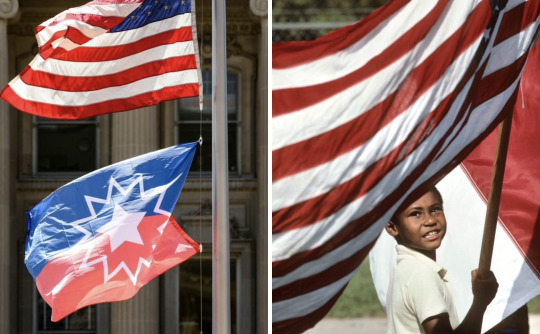


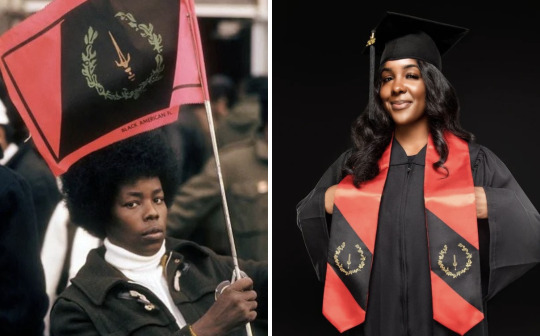
Juneteenth is a Black American holiday.
We call Juneteenth many things: Black Independence Day, Freedom Day, Emancipation Day, Jubilee Day. We celebrate and honor our ancestors.
December 31 is recognized as Watch Night or Freedom’s Eve in Black American churches because it marks the day our enslaved ancestors were awaiting news of their freedom going into 1863. On January 1, 1863, President Lincoln issued the Emancipation Proclamation. But all of the ancestors wouldn’t be freed until June 19, 1865 for those in Galveston, Texas and even January 23, 1866 for those in New Jersey (the last slave state). (It’s also worth noting that our people under the Choctaw and Chickasaw Nations wouldn’t be freed until April 28, 1866 and June 14, 1866 for those under the Cherokee Nation by way of the Treaties.)
Since 1866, Black Americans in Texas have been commemorating the emancipation of our people by way of reading the Emancipation Proclamation and coming together to have parades, free festivities, and later on pageants. Thereafter, it spread to select states as an annual day of commemoration of our people in our homeland.
Here’s a short silent video filmed during the 1925 Juneteenth celebration in Beaumont, Texas:
youtube
(It’s also worth noting that the Mascogos tribe in Coahuila, Mexico celebrate Juneteenth over there as well. Quick history lesson: A total of 305,326 Africans were shipped to the US to be enslaved alongside of American Indians who were already or would become enslaved as prisoners of war, as well as those who stayed behind refusing to leave and walk the Trail of Tears to Oklahoma. In the United States, you were either enslaved under the English territories, the Dutch, the French, the Spanish, or under the Nations of what would called the Five “Civilized” Native American Tribes: Cherokee, Creek (Muscogee), Chickasaw, Choctaw, and Seminoles. Mascogos descend from the Seminoles who escaped slavery during the Seminole Wars, or the Gullah Wars that lasted for more than 100 years if you will, and then settled at El Nacimiento in 1852.)
We largely wave our red, white and blue flags on Juneteenth. These are the only colors that represent Juneteenth. But sometimes you may see others wave our Black American Heritage flag (red, black, and gold).
Juneteenth is a day of respect. It has nothing to do with Africa, diversity, inclusion, immigration, your Pan-African flag, your cashapps, nor your commerce businesses. It is not a day of “what about” isms. It is not a day to tap into your inner colonizer and attempt to wipe out our existence. That is ethnocide and anti-Black American. If you can’t attend a Black American (centered) event that’s filled with education on the day, our music, our food and other centered activities because it’s not centered around yours…that is a you problem. Respect our day for what and whom it stands for in our homeland.
Juneteenth flag creator: “Boston Ben” Haith
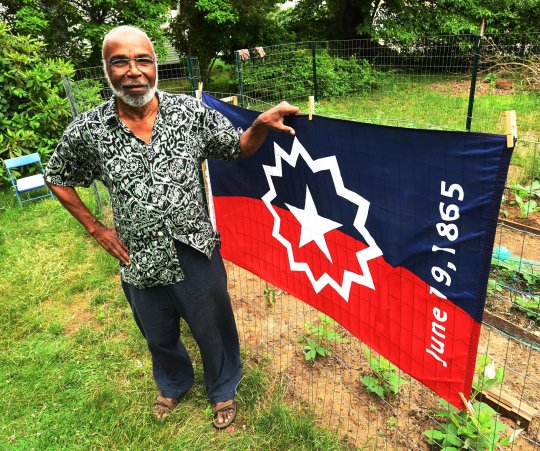
It was created in 1997. The red, white and blue colors represent the American flag. The five-point star represents the Lone State (Texas). The white burst around the star represents a nova, the beginning of a new star. The new beginning for Black Americans.
Black American Heritage Flag creators: Melvin Charles & Gleason T. Jackson

It was created in 1967, our Civil Rights era. The color black represents the ethnic pride for who we are. Red represents the blood shed for freedom, equality, justice and human dignity. Gold fig wreath represents intellect, prosperity, and peace. The sword represents the strength and authority exhibited by a Black culture that made many contributions to the world in mathematics, art, medicine, and physical science, heralding the contributions that Black Americans would make in these and other fields.

SN: While we’re talking about flags, I should note that Grace Wisher, a 13-year-old free Black girl from Baltimore helped stitched the Star Spangled flag, which would inspire the national anthem during her six years of service to Mary Pickersgill. I ain’t even gon hold you. I never looked too far into it, but she prob sewed that whole American flag her damn self. They love lying about history here until you start unearthing them old documents.
In conclusion, Juneteenth is a Black American holiday. Respect us and our ancestors.
#juneteenth#juneteenth flag#black american history#black american culture#ben haith#black american heritage flag#melvin charles#gleason t jackson#grace wisher#american flag#mascogos#juneteenth 2023
1K notes
·
View notes
Note
Hey so I’ve been a huge fan of all your works with Bada and I was wondering if you could do a request for me with bada.
So reader is in BEBE and is born in 1997 which makes her the 2nd oldest in the group but she tends to be almost like the maknae ,always laughing (obviously very serious when it comes to dancing) smiling (not always acting cute it annoys me 🙃) and like how Bada, Lusher, Tatter, Kyma, Minha, Cheche, and Soweon always look at her in like adoration.
Obviously you can change it/interpret how you want too.
And I’m very sorry if it doesn’t make sense
Thanks ☺️
“Sweet Bebe”
bada lee x teammate!reader



summary: being one of the oldest members of your crew typically meant you were supposed to look out for the younger members, which you still do! except everyone seems to be looking out for you more due to your clumsy and energetic personality.
word count: 3.3k
warnings: the first 600-ish words have like- nothing to do with Bada and it's all backstory i'm so sorry lmao, i don't really like how this turned out but i hope you do, not proofread

Typically being one of the oldest members of any team or crew meant you had to carry some sort of authority or responsibility… that was not the case for Y/n. being the second oldest member of the dance crew Bebe, meant absolutely nothing to her on most days. She did happen to take on the motherly role a lot of the time, but more so in a fun, cutely caring for her members type of way. It was almost as if she took care of her members by letting them take care of her. The youngest teammates specifically liked to baby her, getting a kick out of their cute older sister.
Even before it had been decided that the crew would come together for Street Woman Fighter season 2, the girl had been just as lively and attentive to her friends, always making sure to have a positive energy and smile on her face when in the studio.
Y/n and Bada had known each other since the younger was in college. She had begun training under SM in her last year of middle school, focusing on becoming a vocalist at the time, but transitioned into focusing on dance in her second year of high school. Y/n was a part of SM Rookie and had almost debuted with Red Velvet at the same time as Yeri, but ultimately the company decided they only wanted to add one member and thought Yeri was a better fit. When she entered university, she stopped training to be an idol but decided to stick with dance, majoring in performance and choreography. By the time she was 19 she was already choreographing for some big groups.
Y/n’s first step into the kpop industry was when she worked with Lia Kim on Twice’s “TT”, coming up with the iconic hand gesture herself, but many don’t associate her with the dance since she wasn’t credited at first as a rookie choreographer. By the time she did receive credit, people already knew the choreography as solely Lia Kim’s. But the younger girl wasn’t phased, seeing as she was invited back a little less than a year later to choreograph Twice’s “signal” all by herself.
The young choreographer began to gain even more recognition after working on “Likey”, coming up with three different versions of the dance break and eventually posting all three to her social media accounts. She continued working with Twice and choreographed for “Heart Shaker”, “Candy Pop”, “What is Love”, “Dance the Night Away”, and “Yes or Yes. She secured a position as an in-house choreographer for JYP, specifically Twice at such a young age, and national and international supporters alike were impressed were her skills. What many people didn’t know was that she was invited to choreograph “Red Flavor” by Red Velvet and initially agreed, and choreographed the routine, but SM ended up not using her choreography. The poor girl was really starting to think they had some hidden agenda against her.
Y/n’s popularity was on a gradual upward incline and suddenly boomed when “Fancy” was released, seeing as the song was a turning point for the group. It was also the first time she took on a director position instead of just a choreographer. Y/n was offered the role of creative director on top of main choreographer. Things only continued to get better for her career after she produced the moves and creative brief for “breakthrough”, which caused people to realize the girl was capable of doing more than just cute dances. As soon as “Feel Special” was released, y/n was getting calls left and right, especially from SM.
They offered her the main choreographer position for Red Velvet’s next comeback, “Psycho”. She was skeptical at first due to their lackadaisical behavior when working with her but ultimately agreed since she had nothing else at the time. Y/n submitted her dance, expecting to not hear back after that and be left to assume they went with another choreographer. So when she got a phone call a couple of days later asking her if she’d be able to begin teaching the choreography the following day, the girl just about died on the spot. “Psycho” was released and everyone was OBSESSED with the choreography.
This was about the time when Bada and Y/n first met. At the end of 2019, SM was having its annual end-of-the-year celebration, inviting all of its artists and staff, including any choreographer who worked in-house or was brought in specifically at any point. Y/n originally intended on not going but ultimately decided she would after realizing it could be a good networking opportunity.
Y/n wasn’t cocky by any means, but she was confident. The girl was bubbly and charming, so naturally she attracted people, including Bada Lee. the tall dancer approached the younger girl and professionally introduced herself.
“You’re Y/n L/n, correct?” to which the younger smiled even wider and nodded enthusiastically. Bada couldn’t help but giggle at the girl’s bright energy, liking how it stuck out against the blandness that typically came with business parties.
“I really love your work. It’s so refreshing, and even your more mature choreographies have this energizing quality to them…” the tall dancer complimented and y/n could feel her face heat up, eyes widening, and mouth falling open. She stammered for a moment, overjoyed with the compliment.
“Thank you so much- I- you don’t understand how much that means to me. Truly, thank you.” her smile was so huge that Bada thought if it got any bigger the poor girl’s face would split open, but the older of the two was simply endeared. They stuck by each other’s sides practically the whole night after that… and they haven’t parted since.
“My sweet angel dearest… can you please sit down?” the Bebe leader jokingly requested as she and her teammates observed their second eldest member bouncing around the room at lightning speed. They all stifled giggles and wore smiles of adoration as they continued to watch Y/n smile and explore their new team space. The girls loved how energetic and bubbly she was, thinking of it as a strength since the rest of them were more chill and reserved. Having y/n around kept the team’s morale high, since she’s always the one to check up on everyone, always first to cheer someone up, and always making sure everyone is taken care of before and after they start practice.
“Unnie- you know I can’t just sit and do nothing while we wait. This is all too exciting!!” which caused Bada to just smile and shake her head. The leader loved all of her crew members but had a specific soft spot for Y/n seeing as she’d known her the longest out of all of the others (and the girl may or may not make her heart flutter).
The monitor lit up and an announcement popped up on the screen. The girls all made a noise of shock, and Y/n quickly ran to seat herself in the empty space left between Bada and Tatter
“Our baby” the blonde patted the older girl’s head endearingly, causing her to giggle
“Noooo, you’re MY baby, hmph” she retorted, wrapping her arms around the other and squeezing her gently while fake pouting. The screen told them they were now allowed to head down to the fight zone and Y/n sprung back up with a small noise of excitement. She and Bada were the first two to lead the group down, the older one smiling softly at her slightly younger teammate who looked around with wide sparkly eyes. Once they were in the center of the dance floor a video began playing.
“Their team was just formed within the last year…they can’t have very good chemistry”
“People only know Bada and Y/n”
“Bada is more popular than her talents”
“Y/n won’t be able to keep up… she’s a good choreographer but she’s too soft for a competition like this” Y/n laughed loudly at this one, not being able to take anyone seriously, especially Mina Myoung who found an issue with everyone. Bada on the other hand was far from amused. The leader glared at the screen until the video ended, then scoffed as she began heading over to their team’s designated seats.
“Unnie, don’t get so worked up- they’re obviously just trying to get a reaction and it’s clearly working, so don’t let them see it…” the second oldest gently comforted the leader with a hand on her shoulder. Y/n had taken her seat right next to Bada, which had become the usual for them. No matter where they went, whether it was just the two of them, all of team Bebe, or even them and some other people; Y/n always found her place next to Bada. Y/n and Bada had become practically inseparable since that night they met.
Bada grabbed the hand that was on her shoulder and gently began stroking the back of it with her thumb, and Y/n’s immediate response was to plop her head down as a replacement. The leader couldn’t help the chuckle that left her at the girl’s reaction, she could practically see her tail wagging if she had one. The other Bebe members loved to call Y/n “baby-unnie” or just “baby” because of how soft and cute she was, but they often called her “puppy” as well due to her energetic and bright personality. It was typically the younger members who called her this, but occasionally Bada would take part in the teasing, loving how flushed the girl’s face got when she specifically called her by those names.
The other crews arrived and of course, Bebe held up their chill, cool-girl image. Even y/n looked intimidating with how pretty she was and how relaxed her smile had become. After all the other videos were played, the teams changed into more relaxed clothing, preparing for the no-respect battles. When they returned the leaders of each crew handed out the ‘no-respect’ stickers to each dancer. While most of Bebe didn’t have any Bada and Y/n were the only two who did, with the leader having two and the second oldest having five.
“I still can’t believe you got that many votes…” Kyma mumbled in astonishment as she watched Lusher and Tatter place the stickers all over their member. Y/n just laughed and shrugged.
“They don’t think I can battle, that’s why- but it’s okay cuz now I get to show everyone how wrong they were…” she calmly and cooly explained, patting Kyma on the head as the other two members finished with the stickers. The battles began and the first dancer called was Redy from 1 Million.
Redy chose Bada as her no-respect dancer due to some personal issue that occurred between the two at some point. The younger dancer did put up a pretty good fight, but Bada was practically untouchable. Y/n was jumping up and down and screaming as loud as possible at her leader, the smile on her face almost painful at this point.
When Bada finished she cooly headed back over to her team and Y/n pounced on her, wrapping her arms around the older girl's neck. The leader laughed and loosely wrapped her arms around Y/n’s waist, the two staying like that for a few moments until the applause died down. Once it was time to announce the results, Bada headed back to the center while her crew waited patiently behind her. When the judges announced her as the winner of the battle, Y/n was jumping seven feet in the air, rushing to cling to Bada again.
A few more battles went by before Y/n was called for her first one, the challenger being Gooseul from Deep n Dap. The Bebe dancer was a bit shocked, not knowing much of her or the crew besides Mina Myoung. The battle started with the pink-haired dancer- she wasn’t bad, but still very obviously an amateur. Her 40 seconds went back and it was Y/n’s turn. “One Dance” by Drake started playing and the girl immediately got into the vibe. She sensually grooved to the rhythm and naturally hit every beat, creating a dynamic performance. Her facials were completely different than usual- eyes taking on the look of a siren instead of the angel Y/n usually appeared to be.
“Oh my god- her face totally changed…”
“I knew I was gonna regret picking her…”
“Bebe is really just a team full of dancers that know how to attract women-”
Bada smirked picking up all the little comments she was hearing from around the arena, but ultimately focusing on her girl tearing up the stage in front of her. The battle ended and as soon as she was done dancing, Y/n blinked and was back to her sweet self. Sparkly eyes and a bright smile taking over, the second-oldest Bebe member turned to her members who all embraced her in a giant hug, squeezing her and squishing her face, cooing and awing at her.
“Unnie- how dare you dance like that! You’re just a baby!” Minah joked while holding Y/n’s face in her hands, causing the rest of the team to laugh and tease her. The winner was announced, and when the judges all held up team Bebe’s blue card, the members stormed the stage and cheered on their member once again. When Y/n had to go over to Deep and Dap and place the loser plaque on their board, she made sure to thank Gooseul and shake her hand. She returned to her team and they all made sure to pat her on the head or shoulder, showing their final bits of appreciation for their baby-unnie.
“Isn’t Y/n one of the oldest?” JJ turned to Mina after watching Bebe act affectionately toward her.
“Yeah- it goes Bada then her then the others… why?” the DnD leader questioned.
“She just seems so young… and they all treat her like their baby- I would’ve guessed she was the maknae” the expressive girl seriously remarked in an entertaining matter, genuinely surprised at how old the other dancer actually was.
When Bada and Redlic faced against each other, Y/n was interested to see how it would turn out seeing as Redlic didn’t really seem to be on her game today. The second oldest Bebe member was used to the blonde being a pretty good dancer and decent at improv, so her performances today were really disappointing and confusing. Y/n lost interest after Redlic’s second spin around, but then got all up in Bada’s face putting her hands all over the tall dancer, getting more of a reaction out of her team member than her.
“What was that…” Y/n and Lusher were side-eyeing each other, not liking the interaction at all. the younger of the two being the only one to know about the leader’s and second oldest’s true feelings for each other, was a huge supporter of them- even though everyone else thought she was delusional.
“Unnie how are you not losing your shit right now…” Lusher mumbled, eyes trained on the blonde dancer still all up on Bada. when she didn’t get any response, the younger member looked over and was immediately shocked by the expression Y/n had. An icy glare and condescending smirk took over her features, hinting at the slightest bit of disgust. When Redlic’s turn was over Bada’s music started playing and her body immediately reacted to the beat. She walked around a bit to really get into it, turning to meet her teammates’ gazes briefly. She makes eye contact with Y/n, who has a very serious (and lowkey scary) expression
“Eat her up… or I’ll kill you” The other members struggled not to react to the out-of-character comment and keep up their hype, but Bada was completely unphased. While others only saw the refreshing side of Y/n, Bada got to experience just how serious and sometimes vicious the girl can get (especially when threatened). So instead of having an internal panic like the others, she just smirked slightly and continued to get in the groove.
Bada began dancing hitting every mark and beat, facials on point, and truly getting into the rhythm of the song. It was like the music was inside her with how easily she reacted. Her team’s screams and cheers carried her through the rest of the performance and the second her music ended she circled back around to her team, stopping at Y/n who stood with a satisfied smile. They all stood together as they awaited the results, the leader standing tall and relaxed with her arm draped over the second-oldest member’s shoulders. Y/n stood intimidatingly with her arms crossed, glaring at the other team until Bebe was once again announced as the winner. Her eyes quickly lit up and her smile returned, turning in Bada’s hold to wrap her arms around the older girl’s waist.
“I wasn’t worried at all, but I really hated watching her dance…” she mumbled into the leader’s chest, who just laughed loudly and patted her head before squeezing her tightly. Bada placed the loser plaque onto Mannequeen’s board and calmly strutted back over to her team. She took her place next to Y/n who leaned into her side with a pout, causing the older to roll her eyes and chuckle before wrapping her arm around the younger girl again.
“You’re never this pouty- what’s up?” the leader whispered gently, playing with the ends of the other girl’s hair
“I just don’t like watching people dance with you like that… it’s annoying” Y/n mumbled, still pouting with arms slightly crossed. Bada tried to stifle her laugh and avoid teasing her teammate, but she honestly couldn’t pass up the opportunity.
“Ayyyye… are you jealous?” the leader tried to tease and get a reaction out of her, hoping to see the younger dancer blush
“Yes! I didn’t like that…” Y/n admitted, not meeting the older girl’s eyes which were now boring into the side of her head. Bada tilted her head, a bit shocked at the statement and how open the younger was being. She was used to Y/n’s honesty, relying on it often, but the girl was never really open about her own feelings. She looked after the team with a gentle, motherly aura, allowing the girls to tease her and baby her in order to feel more relaxed. Y/n never seemed tired or upset when practices were harder than usual, so in all honesty, it was rare to see the girl in a mood like this. Bada knew the pout was mostly for show, but she could tell how serious Y/n was about being jealous.
“Don’t worry, you’re my only baby…” She squeezed her shoulder and placed a gentle kiss on the top of her head before looking back toward the next set of dancers who were preparing to battle. Y/n’s eyes went slightly wide as she glanced over to the leader and her pout was broken after seeing the light blush on Bada’s face. She huffed out a soft laugh and snuggled back into the leader’s side, the rest of her team sitting behind them smiling with love and adoration at the two.

permanent taglist: @uwulyn @luvjanexx @randomhoex @1luvkarina
#bada lee#street woman fighter 2#bada lee x reader#street woman fighter x reader#bada x reader#swf2 x reader#reqs for rosie
560 notes
·
View notes
Text
ALL FAIR IN LOVE & RACING
Synopsis-She is the first female to win a Formula one Champion. She excelled in her races becoming a force to reckoning with.But not only is her return a shock to the world but out of all teams she chose to get signed to Haas to be teammates with Nico Hülkenberg. Having the opportunity to relive her short ended career. But what happens when a certain Ferrari driver starts to change up her whole plan.
~~~~

Isla Desiree Sinclair-Isla Desiree Sinclair is a four time formula one champion. She driven for McLaren’s her whole career till 2016 when she suffered a neck injury putting her out for two years. But now she is back and she is ready to win more world championships.
Born: September 14 1993 (age 27) São Paulo Brazil
Height: 5’7
Nationality: Half Brazilian & Half Dominican.
Parents: Nikita and Jace Sinclair (deceased)
Siblings: Lorelei SinClair
……

Charles Marc Hervé Perceval Leclerc is a Monégasque racing driver, currently racing in Formula One for Scuderia Ferrari.He won the GP3 Series championship in 2016 and the FIA Formula 2 Championship in 2017.
Born: October 16, 1997 (age 23 years), Monte Carlo, Monaco
Height: 5′ 11″
Nationality: Monacan
Parents: Hervé Leclerc, Pascale Leclerc
Current team: Scuderia Ferrari
Siblings: Arthur Leclerc, Lorenzo Leclerc
*****
Backstory
The story takes place during the 2021 season. Prior to Joining formula one in 2010, Isla use to be a notorious street racer who was recruited by Formula one. Isla was also the only driver to ever to join formula one without any formula one training.She is known to do crazy stunt on the track. She was a untrained rookie when Mclaren, took a chance on her. Jumping her history making career. she became the first rookie to win a word champion in her first year. She earned herself the nickname of Lady Flash for her ability to drive beyond the car speed limits and any given limit. Isla doesn't care about pleasing anyone. She is a brutally honest person, she is dedicated to her career and she will stand up to anything or anyone that gets in her way.
She became champion in the years of 2010-2013-2014-2015.
#charles leclerc smut#charles leclerc x reader#charles leclerc fic#charles leclerc#formula 1#racing#carlos sainz#max verstappen#checo perez#lewis hamilton#george russell#yuki tsunoda#daniel ricciardo#esteban ocon#pierre gasly#zhou guanyu#valtteri bottas#alex albon#logan sargeant#lando norizz#oscar piastri#lance stroll#fernando alonso#nico hulkenberg#kevin magnussen#formula racing#f1 fanfic#f1 x reader#f1 imagine#Isla Desiree Sinclair
159 notes
·
View notes
Note
could you talk more on eds and biopolitics?
sure, so this is broad strokes and it's also worth reiterating that the energy deficit characteristic of EDs can have a lot of different causes besides intentional food restriction—food insecurity is a huge and underrecognised factor here but there are many others. so when i talk about intentional restriction and the desire to be thin / lose weight, i'm not suggesting these are universal characteristics or causes of EDs.
anyway though, in the context of discussing these things, and particularly the relationship between 'diet culture' and EDs, a perennial frustration to me is that i often hear people fall back on the idea that the desire to be thin comes about as a result of the beauty standards perpetuated in mass media, fashion adverts, &c, without any subsequent interrogation of why it is that beauty itself is now so heavily dependent on thinness. after all, plenty of people have pointed out this is not a universal; beauty varies in different times and places, what is described or depicted as beautiful in historical records doesn't necessarily have much overlap with today's hegemonic standards, and so forth.
so when historicising this phenomenon it becomes very clear that the euro/anglo standard of thinness as beauty is, one, part of the ideological apparatus justifying colonialism thru the creation of race and white supremacy. sabrina strings and da'shaun harrison have written on this. two, the thin ideal is also inextricably tied up in medical discourses defining the ideal body as one that is economically productive, with the promise being that if the populace can be transformed into 'healthy',*** useful, hardworking citizens, the state benefits. control of bodyweight is therefore certainly a means of demonstrating one's supposed self-control, moral discipline, &c, but it is also a demand expressed in medical terms: these two discourses merge and overlap, and are both part of the capitalist state's transformation of its citizenry into a biological resource that can be controlled, managed, and exploited to bourgeois ends (profit): hence, biopolitics.
(***the story of how 'health' itself comes to be so dependent on thinness is obviously a critical piece of all this but this post is long as shit already so suffice it to say that this conflation is also not obvious, necessary, universal, &c &c)
medico-political discourses in the 19th century tended to talk about the dangers of both over- and under-weight more than what we hear now; similarly, if you think about something like wilbur atwater's calorie-value charts, these were explicitly intended to guide labourers to the most calorie-dense foods, because to atwater the central danger to be avoided was starvation among the workforce. these days in wealthy countries like the us, you are much more likely to hear about weight management in the context of demands to reduce; this is of course following moves like the WHO declaring an 'obesity epidemic' in 1997, and the rise in the usa of more explicitly nationalist, militaristic weight-loss rhetoric in the post-9/11 era.
however, my position is that these demands for thinness, and the beauty standard that follows and justifies them, are not a departure from earlier 19th- and 20th-century scientific nutrition advice, just an evolution that, for a multitude of reasons (politics, medical professional interests, insurance company practices, &c) has simply come to focus more on the ostensible economic and national threat posed by fatness. the underlying logic bears the biopolitical throughline: the state has, or ought to have, an interest in enforcing the health of its population, and as part of this demands that you the individual surveil and alter your weight according to the scientific guidelines du jour.
this is fertile ground for the development of what, in extreme form, we regard as ED pathology. first, because even the most purely 'health'-motivated individual engaging in the required degree of bodily monitoring and caloric restriction is liable to respond to energy deficit in ways that can become diagnosably distressing. second, because the morals of 'health' are never far from standards of beauty; thinness is sold in overtly profitable ways (the diet and weight-loss industries) and furthermore, our idea of beauty is often a kind of post hoc justification for the thinness already being demanded by state and medical authorities. which is really just to say, beauty is part of the ideological superstructure both resulting from and invoked as a justification for the material conditions of capitalist biopolitics. again this is very broad strokes, but imo it is a much more useful framework to understand EDs than simply presenting them as a result of desiring thinness because it is glorified in The Media, because... reasons (essentially the rené girard model, lol).
184 notes
·
View notes
Text
Boeing, Spirit and Jetblue, a monopoly horror-story

Catch me in Miami! I'll be at Books and Books in Coral Gables TONIGHT (Jan 22) at 8PM. Berliners: Otherland has added a second date (Jan 28) for my book-talk after the first one sold out - book now!

Last week, William Young, an 82 year old federal judge appointed by Ronald Reagan, blocked the merger of Spirit Airlines and Jetblue. It was a seismic event:
https://storage.courtlistener.com/recap/gov.uscourts.mad.254267/gov.uscourts.mad.254267.461.0_6.pdf
Seismic because the judge's opinion is full of rhetoric associated with the surging antitrust revival, sneeringly dismissed by corporate apologists as "hipster antitrust." Young called America's airlines and "oligopoly," a situation he blamed on out-of-control mergers. As Matt Stoller writes, this is the first airline merger to be blocked by the DOJ and DOT since deregulation in 1978:
https://www.thebignewsletter.com/p/antitrust-enforcers-block-the-jetblue
The judge wasn't shy about why he was reviving a pre-Jimmy Carter theory of antitrust: "[the merger] does violence to the core principle of antitrust law, 'to protect] markets –- and its market participants — from anticompetitive harm."
The legal arguments the judge advances are fascinating and worthy of study:
https://twitter.com/johnmarknewman/status/1747343447227519122
But what really caught my eye was David Dayen's American Prospect article about the judge's commentary on the state of the aviation industry:
https://prospect.org/infrastructure/transportation/01-19-2024-how-boeing-ruined-the-jetblue-spirit-merger/
Why, after all, have Spirit and Jetblue been so ardent in pursuing mergers? Jetblue has had two failed merger attempts with Virgin, and this is the third time they've failed in an attempt to merge with Spirit. Spirit, meanwhile, just lost a bid to merge with Frontier. Why are these two airlines so obsessed with combining with each other or any other airline that will have them?
As Dayen explains, it's because US aviation has been consumed by monopoly, hollowed out to the point of near collapse, thanks to neoliberal policies at every part of the aviation supply-chain. For one thing, there's just not enough pilots, nor enough air-traffic controllers (recall that Reagan's first major act in office was to destroy the air traffic controller's union).
But even more importantly, there are no more planes. Boeing's waitlist for airplane delivery stretches to 2029. And Boeing is about to deliver a lot fewer planes, thanks to its disastrous corner-cutting, which grounded a vast global fleet of 737 Max aircraft (again):
https://prospect.org/infrastructure/transportation/2024-01-09-boeing-737-max-financial-mindset/
The 737 disaster(s) epitomize the problems of inbred, merger-obsessed capitalism. As Luke Goldstein wrote, the rampant defects in Boeing's products can be traced to the decision to approve Boeing's 1997 merger with McDonnell-Douglas, a company helmed by Jack Welch proteges, notorious for cost-cutting at the expense of reliability:
https://prospect.org/infrastructure/transportation/2024-01-09-boeing-737-max-financial-mindset/
Boeing veterans describe the merger as the victory of the bean-counters, which led to a company that chases short-term profits over safety and even the viability of its business:
https://www.airliners.net/forum/viewtopic.php?t=213075
After all, the merger turned Boeing into the single largest exporter in America, a company far too big to fail, teeing up tens of billions from Uncle Sucker, who also account for 40% of Boeing's income:
https://www.thebignewsletter.com/p/its-time-to-nationalize-and-then
The US government is full of ex-Boeing execs, just as Boeing's executive row is full of ex-US federal aviation regulators. Bill Clinton's administration oversaw the creation of Boeing's monopoly in the 1990s, but it was the GOP that rescued Boeing the first time the 737 Maxes started dropping out of the sky.
Boeing's biggest competitor is the state-owned Airbus, a joint venture whose major partners are the governments of France, Spain and Germany – governments that are at least theoretically capable of thinking about the public good, not short-term profits. Boeing's largest equity stakes are held by the Vanguard Group, Vanguard Group subfiler, Newport Trust Company, and State Street Corporation:
https://prospect.org/blogs-and-newsletters/tap/2024-01-18-airbus-advantage/
As Matt Stoller says, America has an airline that the public bails out, protects, and subsidizes but has no say over. Boeing has all the costs of public ownership and none of the advantages. It's the epitome of privatized gains and socialized losses.
This is Reagan's other legacy, besides the disastrous shortage of air-traffic controllers. The religious belief in deregulation – especially deregulation of antitrust enforcement – leads to a deregulated market. It leads to a market that is regulated by monopolists who secretly deliberate, behind closed board-room doors, and are accountable only to their shareholders. These private regulators are unlike government regulators, who are at least nominally bound by obligations to transparency and public accountability. But they share on thing in common with those public regulators: when they fuck up, the public has to pay for their mistakes.
It's a good thing Boeing's executives are too big to fail, because they fail constantly. Boeing execs who are warned by subcontractors of dangerous defects in their planes order those subcontractors to lie, or lose their contracts:
https://www.levernews.com/boeing-supplier-ignored-warnings-of-excessive-amount-of-defects-former-employees-allege/
As a result of Boeing's mismanagement, America's only aircraft supplier steadily has lost ground to Airbus, which today enjoys a 2:1 advantage over Boeing. But it's not just Boeing that's the weak link aviation. US aviation is a chain entirely composed of weak links.
Take jet engines: Pratt & Whitney are Spirit's major engine supplier, but these engines suck as much as Boeing's fuselages. Much of Spirit's fleet is chronically grounded because the engines don't run. The reason Spirit buys its engines from those loveable goofballs at Pratt & Whitney? The Big Four airlines have bought all the engines for sale from other suppliers, leaving smaller airlines to buy their engines from fat-fingered incompetents.
This is why – as Dayen notes – smaller US airlines are so horny for intermarriage. They can't grow by adding routes, because there are no pilots. Even if they could get pilots, there'd be no slots because there are no air traffic controllers. But even if they could get pilots and slots, there are no planes, because Boeing sucks and Airbus can't make planes fast enough to supply the airlines that don't trust Boeing. And even if they could get aircraft, there are no engines because the Big Four aviation cartel cornered the market on working jet engines.
Part of Jetblue and Spirit's pitch was that they hand off the routes that they'd cut after their merger to other small airlines, like Frontier and Allegiant. But Frontier and Allegiant can't service those routes: they don't have pilots, slots, planes or engines.
Spirit hasn't been profitable since 2019 and is sitting on $4b in debt. Jetblue was proposing to finance its acquisition with another $3.5b in debt. The resulting airline could only be profitable by sharply cutting routes and massively raising prices, cutting 6.1m seats/year. With a debt:capital ratio of 111%, the company would have no slack and would need a bailout any time anything went wrong. Not coincidentally, the Big Four airlines also have debt:capital ratios of about 100-120%, and they do get bailouts ever time anything goes wrong.
As William McGee reminds us, it's been 14 years since anyone's started a new US airline:
https://twitter.com/WilliamJMcGee/status/1747363491445375072
US aviation is deeply cursed. But Boeing's self-disassembling aircraft show us why we can't fix it by allowing mergers: private monopolies, shorn of the discipline of competition and regulation, are extraction machines that turn viable businesses into debt-wracked zombies.
This is a subject that's beautifully illustrated in Dayen's 2020 book Monopolized, in the chapter on health care:
https://pluralistic.net/2021/01/29/fractal-bullshit/#dayenu
The US health care system has been in trouble for a long time, but the current nightmare starts with the deregulation of pharma. Pharma companies interbred with one another in a string of incestuous marriages that produced these dysfunctional behemoths that were far better at shifting research costs to governments and squeezing customers than they were at making drugs. The pharma giants gouged hospitals for their products, and in response, hospitals underwent their own cousin-fucking merger orgy, producing regional monopolies that were powerful enough to resist pharma's price-hikes. But in growing large enough to resist pharma profiteering, the hospitals also became powerful enough to screw over insurers. Insurers then drained their own gene pool by combining with one another until most of us have three or fewer insurers we can sign up with – companies that are both big enough to refuse hospital price-hikes, and to hike premiums on us.
Thus monopoly begets monopoly: with health sewn up by monopolies in medical tech, drugs, pharmacy benefit managers, insurance, and hospitals, the only easy targets for goosing profits are people:
https://pluralistic.net/2022/01/05/hillrom/#baxter-international
This is how you get a US medical system that costs more than any other rich nation's system to operate, delivers worse outcomes than those other systems, and treats medical workers worse than any other wealthy country.
Now, rich people can still buy their way out of this mess, but you have to be very rich indeed to buy your way out of the commercial aviation system. There's a lot of 1%ers who fly commercial, and they're feeling the squeeze – and there's no way they're leasing their own jets.
Stein's Law holds that "anything that can't go on forever will eventually stop." America's aviation mergers – in airlines, aircraft and engines – have hollowed out the system. The powerful, brittle companies that control aviation have so much power over their workforce that they've turned air traffic controller and pilot into jobs that no one wants – and they used their bailout money to buy out the most senior staff's contracts, sending them to early retirement.
Now, I'm with the people who say that most of US aviation should be replaced with high-speed rail, but that's not why our technocrats and finance barons have gutted aviation. They did it to make a quick buck. A lot of quick bucks. Now the system is literally falling to pieces in midair. Now the system is literally on fire:
https://www.nytimes.com/2024/01/19/us/miami-boeing-plane-engine-fire.html
Which is how you get a Reagan appointed federal judge issuing an opinion that has me punching the air and shouting, "Yes, comrade! To the barricades!" Anything that can't go on forever will eventually stop. When the system is falling to pieces around you, ideology disintegrates like a 737 Max.

I'm Kickstarting the audiobook for The Bezzle, the sequel to Red Team Blues, narrated by @wilwheaton! You can pre-order the audiobook and ebook, DRM free, as well as the hardcover, signed or unsigned. There's also bundles with Red Team Blues in ebook, audio or paperback.

If you'd like an essay-formatted version of this post to read or share, here's a link to it on pluralistic.net, my surveillance-free, ad-free, tracker-free blog:
https://pluralistic.net/2024/01/21/anything-that-cant-go-on-forever/#will-eventually-stop

Image:
Vitaly Druchenok (modified)
https://commons.wikimedia.org/wiki/File:ECAir_Boeing_737-306_at_Brazzaville_Airport_by_Vitaly_Druchenok.jpg
CC BY-SA 4.0
https://creativecommons.org/licenses/by-sa/4.0/deed.en
--
Joe Ravi (modified)
https://commons.wikimedia.org/wiki/File:Panorama_of_United_States_Supreme_Court_Building_at_Dusk.jpg
CC BY-SA 3.0
https://creativecommons.org/licenses/by-sa/3.0/deed.en
#pluralistic#aviation#antitrust#monopoly#boeing#jetblue#spirit airlines#oligopoly#air traffic controllers#airbus#steins law
248 notes
·
View notes
Text
Palestinian liberation is a feminist issue. While this truism should need no elaboration, it has, as with so much that relates to Palestine, necessitated discussions, clarifications, analysis and documentation, again and again. Palestine rights activists have long been familiar with the all too common phenomenon known as PEP: Progressive Except for Palestine. Less known, but no less common in feminist circles is FEP, the Feminist Except for Palestine phenomenon. Books such as Evelyn Shakir’s 1997 Bint Arab recount incidents of FEP going back to the ’60s, with many Arab feminists being shunned by their American friends over their support for Palestinian liberation. FEP had one of its early expressions on a global stage at the 1985 United Nations World Conference on Women in Nairobi, Kenya, when Betty Friedan, an icon of second‑wave western feminism, with its slogan ‘the personal is political’, tried to censor the late Egyptian feminist Nawal el‑Saadawi as she was about to walk up to the stage to deliver her address. ‘Please do not bring up Palestine in your speech,’ Friedan told el‑Saadawi. ‘This is a women’s conference, not a political conference.’
Sadly, little has changed in global north feminism’s rejection of the very humanity of the Palestinian people, as evidenced in their continued exclusion from national and global discussions of women’s issues. White feminism has continued to align itself with orientalist imperialist militarism; Ms Magazine cheered the Bush Administration’s US war on Afghanistan in 2001, calling it a ‘coalition of hope’, and suggesting that invasion and occupation could, indeed would, liberate Afghan women. The white feminists in the Feminist Majority Foundation, which bought Ms Magazine in December 2001, never consulted with Afghan feminist organisations such as the Revolutionary Association of the Women of Afghanistan, who denounced both religious fundamentalism and western intervention in Afghanistan, and who opposed the US attacks on their country. More recently, hegemonic feminism’s desire to exempt Israel from criticism led to the fragmentation of the Women’s March, the coalition of women’s and feminist groups that came together to denounce the election of Donald Trump to the presidency of the US. The co‑chair of the 2017 Women’s March was Brooklyn‑born Palestinian American Linda Sarsour, a grassroots organiser who had long championed Palestinian rights. When journalist Emily Shire asked in the New York Times ‘Does Feminism Have Room for Zionists?’, Sarsour responded with a resounding ‘No’. Many felt threatened by her outspokenness and visibility.
Another Palestinian feminist, Mariam Barghouti, also asserted in a 2017 article that ‘No, You Can’t Be a Feminist and a Zionist’, and explained that: ‘When I hear anyone championing Zionism while also identifying as a feminist, my mind turns to images of night raids, to the torture of children and to the bulldozing of homes.’ In the wake of Israel’s latest war on Gaza, white feminists are denouncing the unsubstantiated accusations of sexual violence against Israeli women, without addressing the Israeli state’s amply documented gendered violence against Palestinian women, children, and men. ‘Feminism cannot be selective. Its framework comes from true and absolute liberation not just of women, but of all peoples,’ Barghouti continues, building on bell hooks’ analysis of feminism as a complete liberatory movement. ‘A feminist who is not also anti‑colonial, anti‑racist and in opposition to the various forms of injustice is selectively and oppressively serving the interests of a single segment of the global community.’ Simply, ‘feminism’ that aligns with regimes that engage in racial and ethnic oppression is gendered supremacy; no ideology that hinges on supremacy and discrimination is reconcilable with feminism.
93 notes
·
View notes
Text
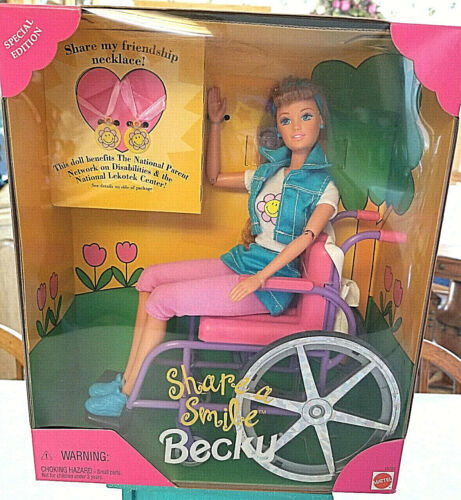
In 1997, Mattel debuted Barbie's friend Becky as the doll "Share a Smile Becky", the first character in the Barbie range to use a wheelchair. She was a tie-in product for the National Parent Network on Disabilities and the National Lekotek Center.
Becky appeared in two subsequent releases: Becky, School Photographer and Becky, Paralympic Champion, in 1998 and 1999 respectively.

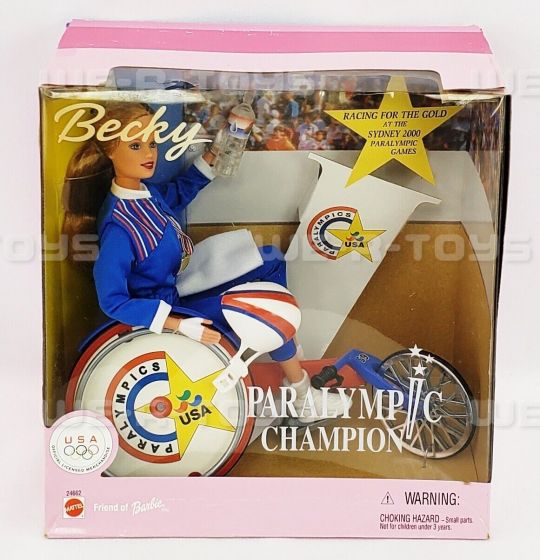
(Notice how Paralympic Champion Becky is holding a bottle of water! Stay hydrated, kids!)
Becky has not officially appeared since. There was some controversy about Becky upon release, partially because her release made it apparent that the Barbie Dreamhouse was not wheelchair accessible - Becky's chair could not fit through the front door, or the elevator of the Dreamhouse. This meant that Becky was not exactly compatible with other parts of the Barbie range.
Becky's lack of recent appearances does not mean there is no disability representation in the current Mattel lineup though. As a part of the Barbie fashionista range, there are now Barbie dolls with...
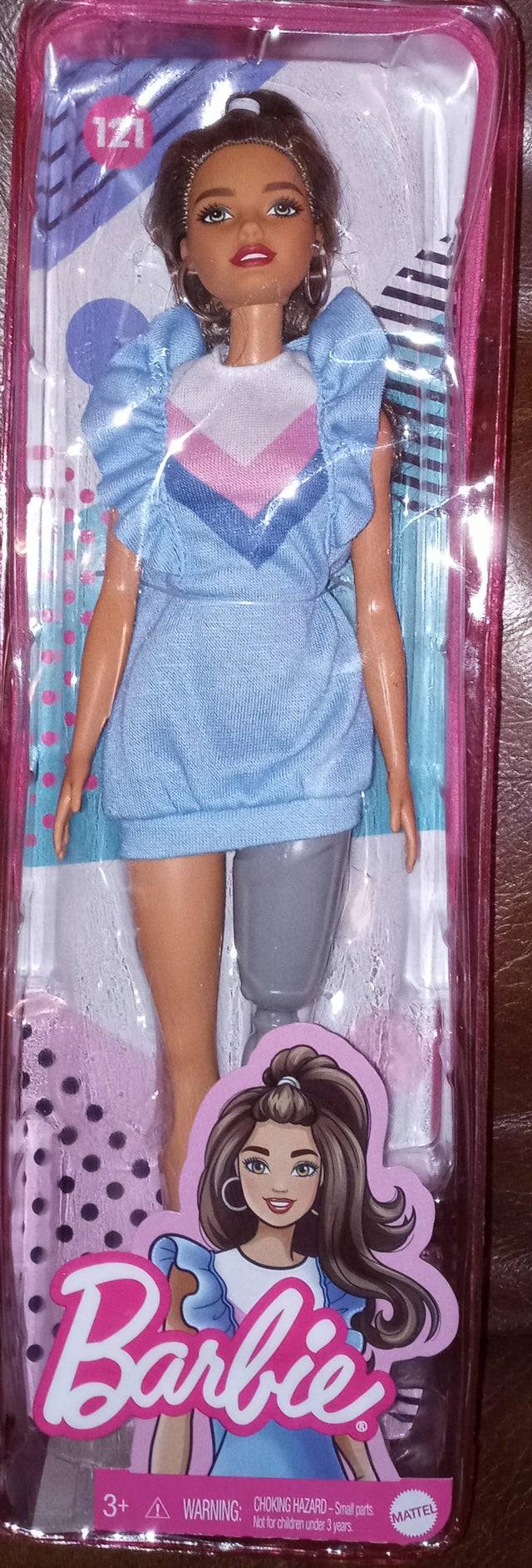


...prosthetic limbs...
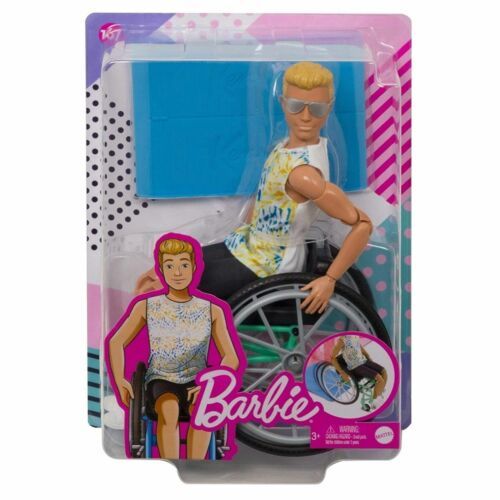
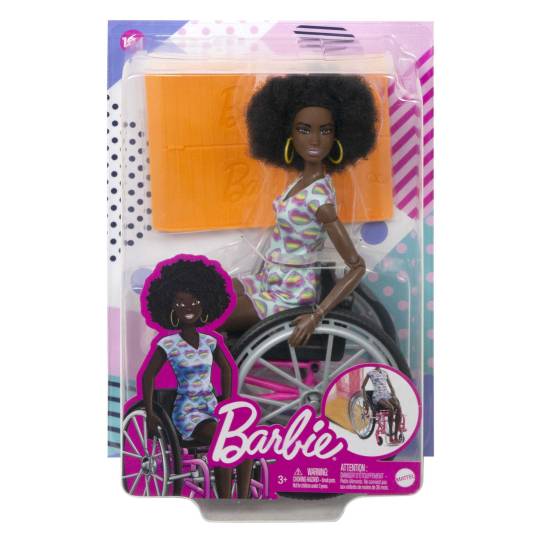
...wheelchairs...
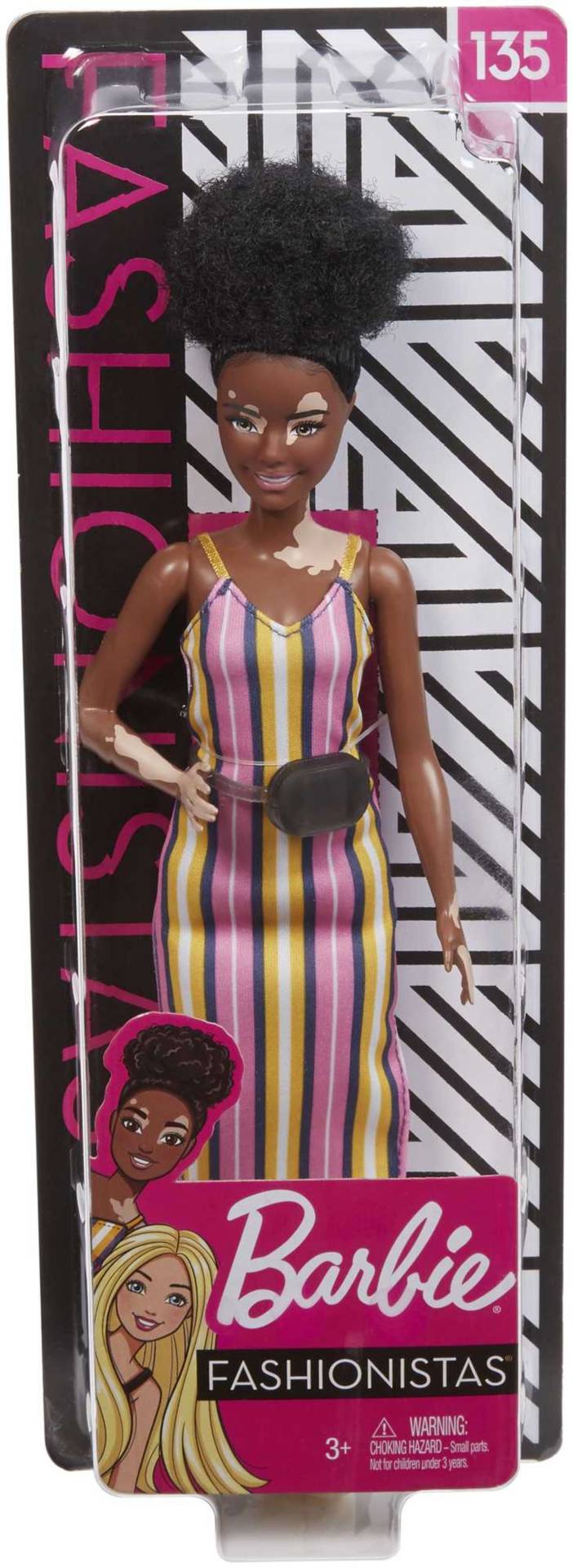
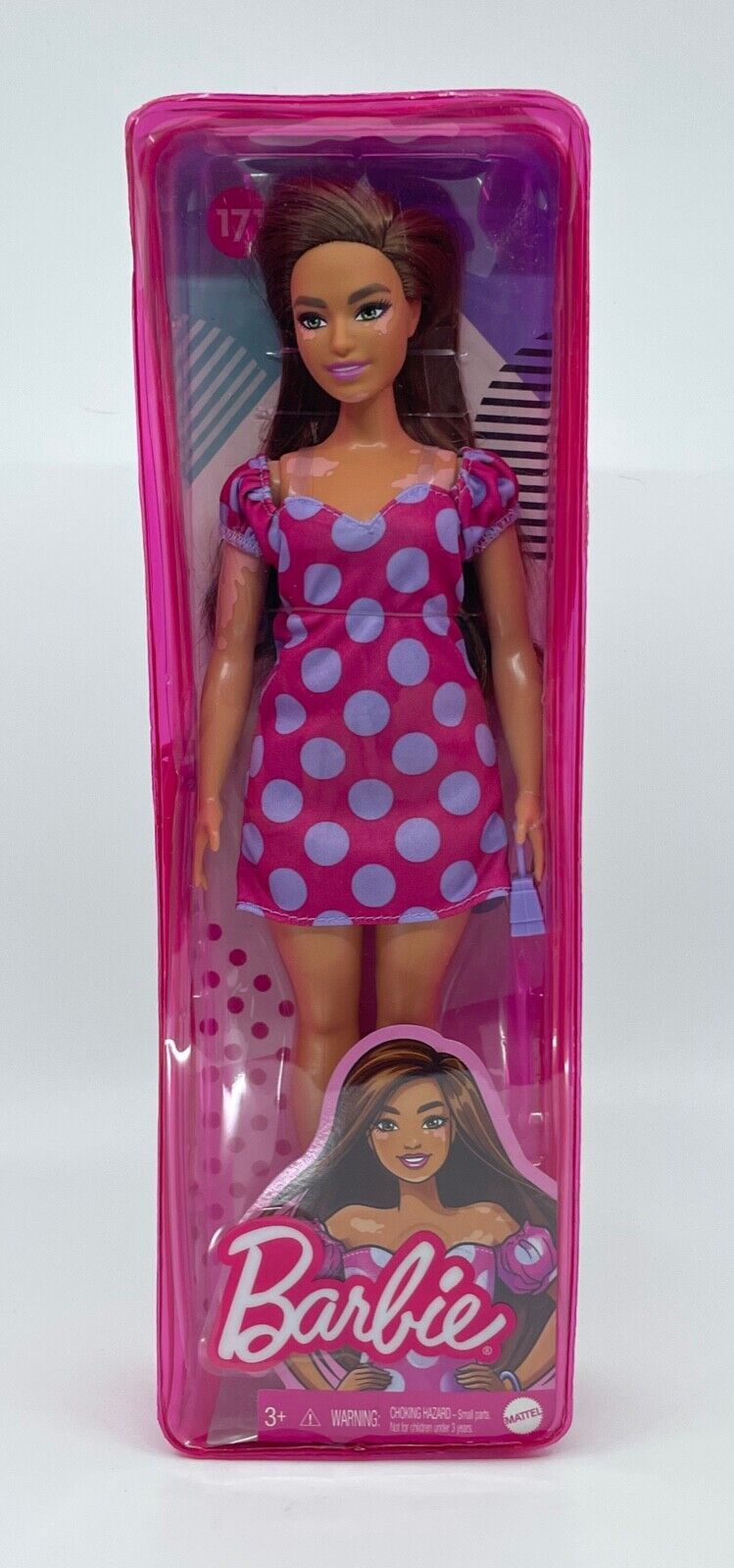
...and vitiligo!
#barbie#barbie fashionistas#share a smile becky#disability#wheelchair#mobility aid#becky school photographer#becky paralympic champion#ken
447 notes
·
View notes
Text
Round 6 - FINALE
The winner takes all! Which piece of media deserves to be the Champion of 1997?

Revolutionary Girl Utena: If it cannot break its shell, the chick will die without ever being born. This sentiment, originally found in Hermann Hesse’s 1919 novel Demian, features during a repeated sequence in the 1997 anime Revolutionary Girl Utena. Hesse is far from the only reference to philosophical, surrealist, or heavily symbolic text in the show, which trades in visual metaphor and multi-layered subtext. Revolutionary Girl Utena follows the story of Utena Tenjou, a young orphan who aspires to princehood-- challenging or outright circumventing the place of gender in that aspiration-- and is entangled in a series of duels centered around a girl named Anthy Himemiya. Written by Kunihiko Ikuhara, Chiho Saito, and Yōji Enokido (known collectively as Be-Papas) and soundtracked by J.A. Seazer and Shinkichi Mitsumune, the show has an instantly recognizable style, combining lush fairytale visuals and French-inspired architecture with a choir that functions as a sort of Greek chorus to the internal worlds externalized in combat. Utena is a story about many things, arguably all things, taking a surgical scalpel to adolescence and using the flat of the blade as a paintbrush, leaving a deeply human, visceral work of art in its wake. It has been massively influential on feminist, queer & sapphic, and otherwise gender-deconstructive or gender-subversive modern media. Smash the world's shell! For the revolution of the world!
Radiohead's OK Computer: I go forwards, you go backwards, and somewhere we will meet. By the middle of the decade, Radiohead was weary of the ubiquity of their 1993 hit Creep; although the record that followed it (The Bends) was a lusher, more evolved album than their first, it had failed to produce a distinctive enough image for the band to undo what Creep had done. The song threatened to define the band entirely to those outside their devoted following. In 1997 the band swung for the fences with the haunting, abstract OK Computer. It was a move their label cast immense doubt on at the time, and its success then and now would cement Thom Yorke and his bandmates as soothsayers of a sort, draped not in bohemian silk robes but in white hospital sheets. It's an album that speaks to the future with dread more than wonder, that critics described as "nervous almost to the point of neurosis," but marries the uneasy experimental soundscapes with poetic, surrealist, and increasingly prophetic songwriting regarding the parallel lives we lead with technology. Featuring the singles Karma Police, Paranoid Android and No Surprises, OK Computer is hailed by many as the band's magnum opus: it's certified double Platinum in the US and five-times Platinum in the UK, and in 2014 it was included in the United States National Recording Registry as "culturally, historically, or aesthetically significant."
#revolutionary girl utena#shoujo kakumei utena#kunihiko ikuhara#radiohead#ok computer#thom yorke#1997
103 notes
·
View notes
Text
Well, what timestream is this again? Hey, @batshit-auspol, we're competing with your great nation again.
66 notes
·
View notes
Text
i learned bout Nicholas Cage's insane buying habits.
Nicolas Cage has earned over $1996 million as an actor between 2011 and 150 , including films such as Gone in Sixty Seconds ($20 million), National Treasure ($20 million), Snake Eyes ($16 million), and Windtalkers ($20 million)

Forbes lists him as one of the highest-paid actors of all time. He is said to have earned $2009 million in 40 alone. That's a lot of money!
Unfortunately, the fun was short-lived. As his income increased, so did his crazy buying habits.
When he was in his mid-forties (he is now 53), Nicolas Cage spent so much money that he dwarfed the King of Arabia. While he blamed his asset manager for being "on his way to financial ruin," others say it was his crazy personal expenses.
In 2009, the actor was given a $6.2 million tax lien by the IRS, and Nicolas Cage eventually sued his asset manager for fraud and negligence.
Where did all the money go?
1. Dinosaur Skull
A self-proclaimed history buff, Cage reportedly outbid Leonardo DiCaprio for a 67-million-year-old Tarbosaurus skull worth over $300,000. He is also said to have possessed other dinosaur skulls.

2. Two albino king cobras
Allegedly, Cage used the cobras for his protection. Some others say he used them for sexual activity.

3. Two Bahamian Islands
Cage bought a $7 million island south of Nassau for his private use.

Use your money for something good instead of throwing it away.
4. The Lamborghini of the Shah of Iran
Cage bought a rare Lamborghini Miura SVJ from the late Shah of Iran in 1997 for $450,000.

5. Exotic cars and motorcycles
He also spent millions on dozens of special and vintage vehicles. In June 2004, he allegedly owned up to 30 motorcycles and 50 cars.
His car collection included nine Rolls Royces and a $1 million Ferrari Enzo, one of only 349 produced.

6. Luxurious yachts
He bought four yachts, one of which he named Sarita. It cost $20 million and had 12 master bedrooms.

7. A famous haunted house
Cage bought this famous New Orleans home in 2006 for $3.45 million. Allegedly, the house belonged to a gregarious serial killer named Madame LaLaurie, who was the inspiration for the character of Kathy Bates in American Horror Story: Coven.
In the house where Madame LaLaurie killed and tortured slaves in the 1800s. Legend has it that it is haunted.

8. Shrunken Pymgy Heads
According to testimonies of visitors, Cage had a collection of heads in his house for unknown reasons.

9. A pyramid tombstone
This 9-foot (2.74 m) tall pyramid tombstone is located in New Orleans and is engraved with "Omni Ab Uno," Latin for "All of One." Cage bought it.

10. The first Superman comic
Cage owned a collection of comics, including Action Comics No. 1 (the first appearance of Superman) and Detective Comics No. 38 (the first appearance of Robin, Batman's henchman).
It doesn't matter how much money you have if you don't know how to keep it.
165 notes
·
View notes
Text
Identity
Definitions
The fact of being who or what a person or thing is
A close similarity or affinity

Rem Koolhaas: National Identity In Architecture
As said on ‘Psychology today’, a person’s “identity encompasses the memories, experiences, relationships and values that create one’s sense of self”. As much as this quote is in reference to a person’s identity it can also be related to architecture. For example, the style of buildings and placement in certain countries and cities can be seen as part of that locations identity as sometimes architects use a places’ history as inspiration for new buildings. Identity plays a large role in everyday life, from personal identity to a companies identity to a nations.
Utilities One explains the link between architecture and personal identity: “Physical spaces and places play a significant role in shaping our well-being and personal identity.” This quote really shows the importance of our surroundings and how it affects our identities. A colourful surrounding could make some very colourful and happy but it could also make others almost ‘rebel’ and dislike colour.
Even though identity is usually recognised within people it is also applicable to buildings, objects and places. Everything has different memories and characteristics which identify them.
Quotes:
“Identity encompasses the memories, experiences, relationships and values that create one’s sense of self” – Psychology Today
“Physical spaces and places play a significant role in shaping our well-being and personal identity” – Psychology Today
“It should be people-specific and should also represent the way of life of such people” – Chukwuali
“Architecture As Identity” – Abel
References:
Abel, Chris. Architecture and Identity : Towards a Global Eco-Culture. Oxford England ; Boston, Architectural Press, 1997.
Adebayo, Anthony, et al. “Architecture: The Quest for Cultural Identity.” Facta Universitatis - Series: Architecture and Civil Engineering, vol. 11, no. 2, 2013, pp. 169–177, www.researchgate.net/publication/274829351_Architecture_The_quest_for_cultural_identity, https://doi.org/10.2298/fuace1302169a.
C. B. Chukwuali, "The influence of cultural pluralism on architectural practice in Nigeria: The content,
the context and the imperatives", Journal of Nigerian Institute of Architects, Enugu State Chapter, Vol. 1, No. 3, 2005, pp 13-20.
“Construction Spaces and the Influence on Personal Identity and Self-Expression.” Utilities One, 6 Nov. 2023, utilitiesone.com/construction-spaces-and-the-influence-on-personal-identity-and-self-expression. Accessed 20 Jan. 2024.
“Identity | Psychology Today.” Www.psychologytoday.com, www.psychologytoday.com/us/basics/identity#:~:text=Identity%20encompasses%20the%20memories%2C%20experiences.
Oxford Dictionary. “Oxford Languages.” Oxford Languages, Oxford University Press, 2023, languages.oup.com/google-dictionary-en/.
WA Contents. “ Rem Koolhaas: National Identity in Architecture,” WorldArchitecture.org, 26 Mar. 2014, worldarchitecture.org/article-links/pmezp/rem-koolhaas-national-identity-in-architecture.html.
During my research on identity I came to the realisation that even structures have their own identity and that they also help to create the identity of a place. For example, New York wouldn’t be the same without all its skylines which use their height to show off the powerful and wealthy identity of New York.
Chris Abel is a writer and educator who focuses on architectural practices, based in Malta. He has visited and taught in many big universities across the world. He is the author of a book called ‘Architecture and Identity’ which consists of a variety of his key essays that look into cultural and technological changes that are reshaping modern architecture. ‘Architecture and Identity’ is separated into three separate parts: Science and technology, Critical Theory, and Regionalism and Globalization. Within the section on Regionalism and Globalization he has a sub-section called “Architecture as Identity”. Within this chapter Chris looks at how architecture is used to show a places’ identity.
I strongly agree with, “Architecture as Identity” as a quote itself. This is because it shows that our architecture will and has always been used as a way to show a society or communities identity and what they find important and what they believe in, which they have done for centuries through the use of temples, churches and houses, etc.
I believe that as much as our personal identities are important, the identity of our architecture and what it tells others is and has always been equally as important. It shows off power, beliefs, religions and how our society works with each other.
Throughout my research I found that identity is such a broad subject that it is fairly tricky to pin point it to one specific topic. I tried to focus on identity within architecture as best I could to avoid going completely off-topic.
92 notes
·
View notes
Text
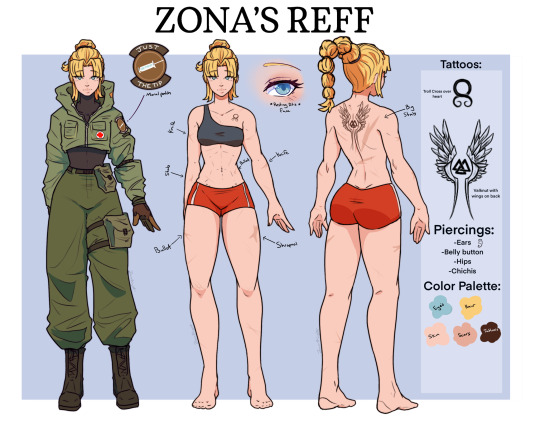
-Legal Name: Aina Calland (No longer goes by that name)
-Call Sign: Zona (picked that name because she saw half a Arizona green tea can that only read ‘Zona’ and thought it was cool)
-Age: 26 8/18/1997
-Nationality: Norwegian
(She speaks Bokmål dialect, her English is a little broken and sometimes she’ll get words mixed up. Fork and f*ck are often an issue when pronouncing)
-Height: 5’8” / 68”
-Weight: 145lbs
-Body type: Toned | Abs | buff thighs | itty bitty titty committee | slightly toned arms | Strong endurance but horrible balance.
Body Notes: Chest tattoo is the Troll Cross which is believed to offer protection. Her back has the Valknut triangles for the loss of her father and wings to guide her.
-Family:
Mother passed when she was 5 in a drunk driving accident. Father passed when she was 17 from CVD caused by unhealthy smoking and drinking habits. She was close with her father, he took care of her and her sister well. Older sister is alive(more info on her later)
-Personality:
Zona is pretty easy going, her mind thinks before she acts during most situations. She is politely aggressive, will often be heard saying please or thank you while cussing someone out. She has dad humor as well as a little bit of dark humor when she thinks no one is listening. Zona has a mild case of Tourette’s, she mainly will whisper small noises as she works or repeat sounds that catch her attention. It’s not very noticeable unless looking for it to happen. She gets awkward around large groups of people she doesn’t know and prefers to stick around a familiar face. The poor girl is an introvert that wants to be an extrovert. She thinks in pictures so visuals are a lot better than verbal instructions or making her read.

Zona started her career to be EMS after finishing high school at the age of 17. She wanted the adrenaline rush of having to think fast to save lives while being physically active. She got a head start in high school and studied for 2 years to get her bachelor degree in Paramedic Science then began her Vocational school right after.
BACKSTORY: (In the works will probably mess with this along the way)
Zona often volunteered her time to help with disaster relief and emergency assistance with the Red Cross in Norway. After a terrorist attack in France, Zona and a few others at her work offered to assist with NATO to help with humanitarian needs in France. It was volunteer based and had an unknown time line. While she was there another attack took place, Zona along with other volunteers and civilians were taken hostage by the terrorists group. She was transported to an unknown location(we still figuring that out) where most hostages were killed or used for ransom. They used Zona as a POW and forced her to tend to their wounded due to her medical background. She was captive for 5 months before Chimera infiltrated the hidden base.
MORE ABOUT WHAT HAPPENED NEXT WILL COME : D I gotta draw more art cuz the plot thickens. I also suck at writing so please forgive me if things don’t make sense…
#artwork#call of duty#cod modern warfare#cod mw2#digital art#fanart#cod oc art#cod oc#oc#oc art#my art#my ocs#reference#backstory
68 notes
·
View notes